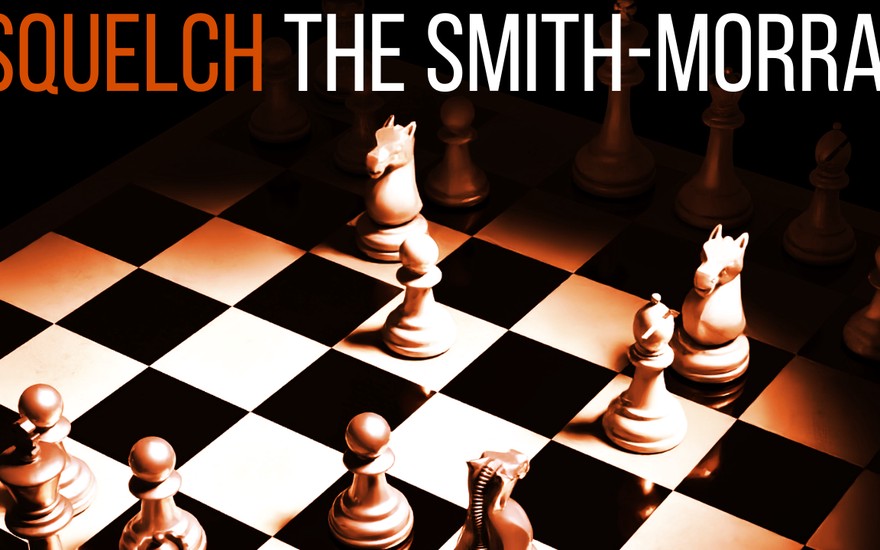Faced with the Sicilian Defense (1.e4 c5), many white players avoid the Open Sicilian that comes about after 2.Nf3 and 3.d4. Instead, they choose an Anti-Sicilian like the Smith-Morra Gambit (1.e4 c5 2.d4 cxd4 3.c3)
At club level, an unprepared black player can quickly find themselves in serious danger. White aims for a menacing setup like this:
Of course, black needs to survive long enough to face even this!
Traps
The Smith-Morra Gambit player hopes their adversary will fall into a nasty trap, and there are many. For example:
Or this one:
Many black players look to turn the tables on white with the so-called Siberian Trap:
To avoid accidents, many black players decline the gambit or give back the pawn immediately.
I’m not one of them. If I knew all my opponents would play the Smith-Morra, I would always answer 1.e4 with 1…c5. If the line is so great for white, why do top players not use it?
The Recipe
In the traps above, black has problems on e5 and b5, and uncoordinated pieces. Knowing what you’re up against makes it far easier to deal with!
There are many viable setups for black, but I defend the Smith-Morra with the line 2…cxd4 3.c3 dxc3 4.Nxc3 Nc6 5.Nf3 d6 6.Bc4 a6! Don’t rush that …Nf6 move.
Let’s see some examples.
Early Games
Debut by Transposition
According to the MegaBase, Dutch master Lodewijk Prins first reached the position after 6…a6 against Savielly Tartawkower in 1950, but couldn’t recover after his pieces got tangled early on. The game started as an O’Kelly Sicilian (1.e4 c5 2.Nf3 a6).
Battle of Titans
Fischer and Kortschnoj drew in Buenos Aires 1960, also after transposing from an O’Kelly.
San Antonio 1972
The Tournament Announcement for San Antonio 1972. Source: Chess Life and Review, October 1972
The Church’s Fried Chicken International, held in San Antonio, Texas in 1972 remains one of the strongest events ever held in the United States. Lajos Portisch, former World Champion Tigran V. Petrosian, and future World Champion Anatoly Karpov tied for first place with 10.5 points out of 15.
American master Ken Smith (the “Smith” in “Smith-Morra”) tried the gambit several times, but without success against such chess heavyweights.
Let’s take a look at two of those games. Both were played in the second half of the tournament when black could have expected the Smith-Morra Gambit.
Round 9 vs. Evans
We saw this American legend play a model game before. He does again here:
Evans also played in Buenos Aires 1960, so he would have known the Fischer—Kortschnoj game above.
Round 13 vs. Mecking
The future World #3 emulated the Kortschnoj/Evans treatment and then collected material.
The bottom line on facing the Smith-Morra Gambit
If you play the Sicilian you should be happy to face the Smith-Morra, or any Anti-Sicilian for that matter. Playable though they may be, Anti-Sicilians are inferior to the Open Sicilian,
Don’t use the common excuse “white knows their pet line better than I will.” Study! Learn how to deal with the annoying sidelines your opponent can throw at you, and thank them for not challenging you in the most critical way.
I don’t have a perfect record against the Smith-Morra Gambit, but I score better than 50%. Anytime you can say that with one of your black openings, that is a big success.
